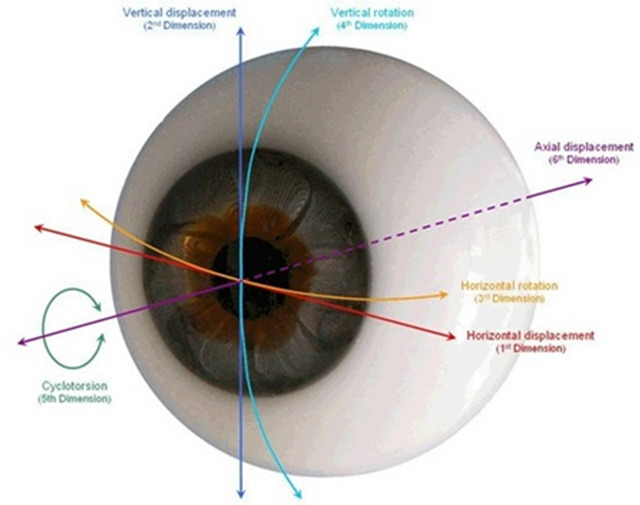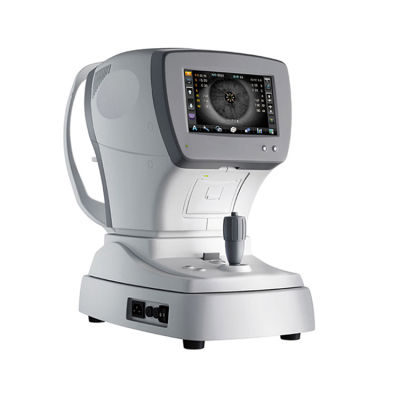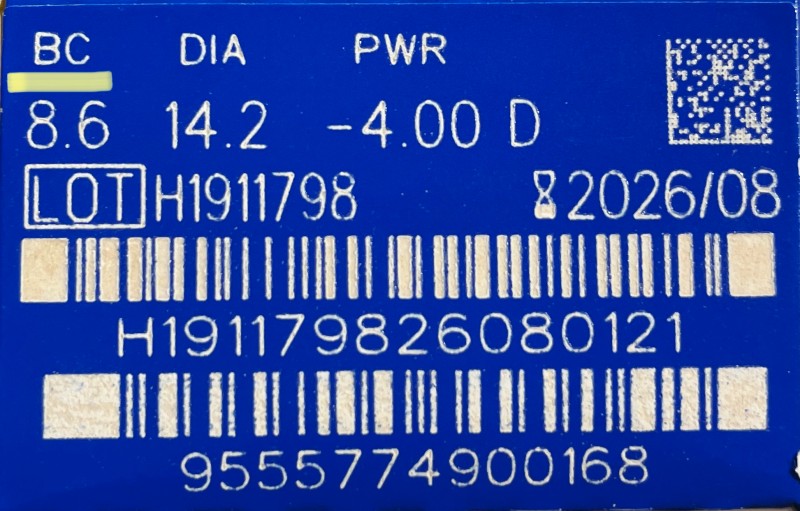How To Check Eye Shape, How To Check Lens Size, Check Various Information On Pack Lenses!
Posted by Lurube on on 20th Dec 2022
How To Check Eye Shape, How To Check Lens Size, Check Various Information On Pack Lenses!
Hello, this is Lurube ^^
Today, for a healthier lens life, I'll tell you some good information you should know.
1. What is the shape of the eyes?
Eye shape first? Some of you may be hearing it for the first time, and even if you've heard of it, you're probably wondering what exactly it means.
Actual eye shape is not a scientific name.
<Radius of corneal curvature> is an easy-to-understand term for customers.

Everyone's eye size is different.
There is a slight difference in the curvature of the cornea where the contact lens actually sticks.
in the picture above
Orange line (horizontal curvature, horizontal rotation)
Sky blue line (vertical curvature, vertical rotation)
These two can be expressed as eye shapes.
In particular, based on the flatter side line (mainly horizontal)
We measure the radius of curvature and help you select products.


The image above is the result of printing after measuring the eye through a machine called an auto reflector.
Visual acuity information and eye shape are measured. The part marked R1 is the radius of curvature of the flatter surface.
The right eye is displayed as 8.42 and the left eye as 8.43.
The mean radius of curvature of the cornea of the lens manufacturer is manufactured at about 7.8 to 8.0.
In the case of pack products that are packaged in mass production, there are sometimes two different shapes, but most contact lenses are produced based on one average value.
So, if the radius of curvature is too large as in the image above (if your eyes are flat), it may look like the picture below if you wear a normal lens.

<When the eyes are Flat>
Since the eye is flat compared to the lens, tears are concentrated in the center of the lens, and the lens adheres too closely to the eye, impairing tear circulation, clouding of isolated tears, and consequently insufficient oxygen supply, resulting in hyperemia, dryness, corneal inflammation, and night halos. Various problems occur, such as symptoms and central vision loss.

<If your eyes are Steep>
Problems such as the lens not being seated and moving, peripheral vision deterioration, halo phenomenon, foreign body sensation when wearing the lens, dry feeling due to rapid dehydration, and central congestion may occur.
how do I find the right lens for my eye shape?
( => R1 + 0.7 )
First of all, you need to know your R1 value, that is, the flat radius of curvature. There is no other way than to measure it with a machine, so go to an ophthalmologist and measure it first. Just add +0.7 to that measurement.
(The reason for adding 0.7 is that the cornea is an aspheric surface that gets flatter little by little as it goes to the periphery.)
Then, you can look at the difference between the BC mark on the surface of the contact lens you are currently using and the value plus +0.7 to my eye shape, right?
If 8.4 is the standard, the shape of the lens suitable for my eye shape is 9.1 !! The lens closest to 9.1 would be the Acube True Eye BC9.0 (made to order) or the Acube Oasis BC8.8.
9.1 is the most suitable for my eye shape, but if you wear a Base Curve 8.5 or 8.3 smaller than 9.1, the lens will be tight on your eyes and will be steep. Problems such as the lens not being seated and moving, peripheral vision deterioration, halo phenomenon, foreign body sensation when wearing the lens, dry feeling due to rapid dehydration, and central congestion may occur.

Each product is marked like this.
DIA in the product label is an abbreviation for Diameter. It means the total diameter of the lens. 14.2mm is the standard diameter, If the diameter is about 14.5mm, it will hold the eyes more tightly. If the diameter is as small as 13.8mm (Ciba Vision), it becomes a looser fitting. When fitting according to the shape of the eyes, experts will refer to it along with BC.
Even if I don't mention EXP, everyone knows, It's the expiration date.
One tip for this Disposable lenses have a fairly long shelf life of 4-5 years. Even products that are until 2016 are not past their expiration date. Buy products that have an expiration date of at least 2-3 years. Could be more comfortable to wear.